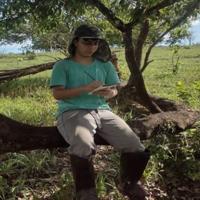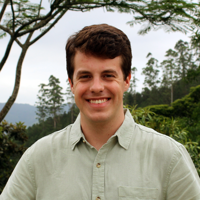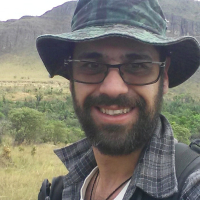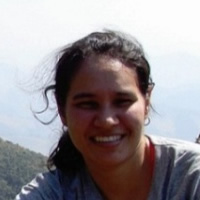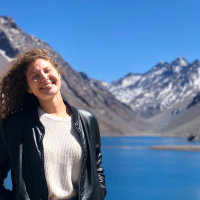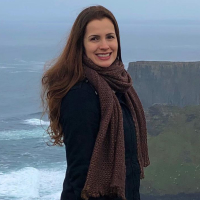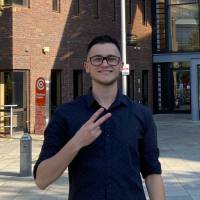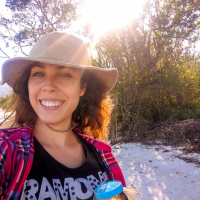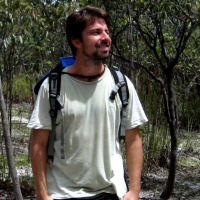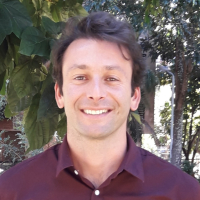About us
The planet Earth has been in constant transformation since it emerged approximately 4.6 billion years ago.
Thus, the ecosystems we observe today are the result of interactions among all the elements that have made up the Earth system since its origin. For example, before the uplift of the Andes mountain range, very little moisture was channeled through the region, which led to the existence of many flooded areas in what is now the western part of the Amazon Basin (Fig. 1).
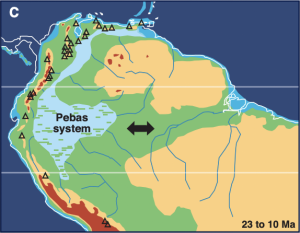
Fig. 1 – Pebas System, depicting flooded areas in the western Amazon before the complete uplift of the Andes. In green, lowland regions;in red, highland (alpine) regions; in yellow, mountainous regions; in blue, lakes and coastal areas. Source: Hoorn et al., 2010, Science.
With the complete uplift of the Andes, the flooded areas associated with the Pebas System were drained toward the northeast, in the direction of the Atlantic Ocean, reshaping the landscape into a configuration similar to what we observe today (Fig. 2).
The Andes mountain range enabled greater moisture retention brought from the Atlantic Ocean by the trade winds, supplying enough water for the Amazon tropical forests to form and be sustained.

Fig. 2 -Configuration of the Amazon Basin similar to what we see today. Source: Hoorn et al., 2010, Science.
Just as this process took place in tropical South America, many others occurred across the entire planet. With the emergence of humans, new interactions began to modify ecosystems and landscapes, leading to the present day.
Considering the current interactions between humans and the natural environment—i.e., socio-ecological systems—what are the risks we are exposed to, and what is our capacity to persist through time and space? This is the central question guiding the studies conducted by our group, across different temporal and spatial scales, as we work to quantify the risks, vulnerabilities, and resilience of such systems.
To that end, the IpES group brings together a highly interdisciplinary team, including ecologists, mathematicians, physicists, meteorologists, and social scientists. We welcome all those who identify as enthusiasts, seeking to understand and investigate the interactions and mechanisms that drive change and transformation on the planet, as well as to propose solutions for a more just and harmonious future.
Main Missions:
- Build and promote an integrated and interdisciplinary environment and culture to address current planetary challenges;
- Train and empower Brazilian scientists, fostering geographic, cultural, gender, and mindset diversity;
- Bring together traditional and scientific knowledge to develop the conceptual approaches used by group members;
- Synthesize and advance knowledge on climate-vegetation-human interactions, feedback mechanisms, and resilience, connecting studies from local to global scales;
- Advance scientific understanding of risk assessment and resilience quantification to evaluate the dynamics of potential changes in land cover, vegetation, and human environments.
Team
Ana Paula da Silva Faggiani
I am a graduate student in meteorology at the Federal University of Santa Catarina (Brazil). I like to study and work with computational logic and programming languages, having knowledge in shell, grads and python. I seek to understand how climate change can affect weather systems and how they are interconnected. I believe that all knowledge acquired should be passed on to everyone and that is why I have special affection for scientific dissemination. I love beach, nature, sports and understanding the human mind and human behavior.

